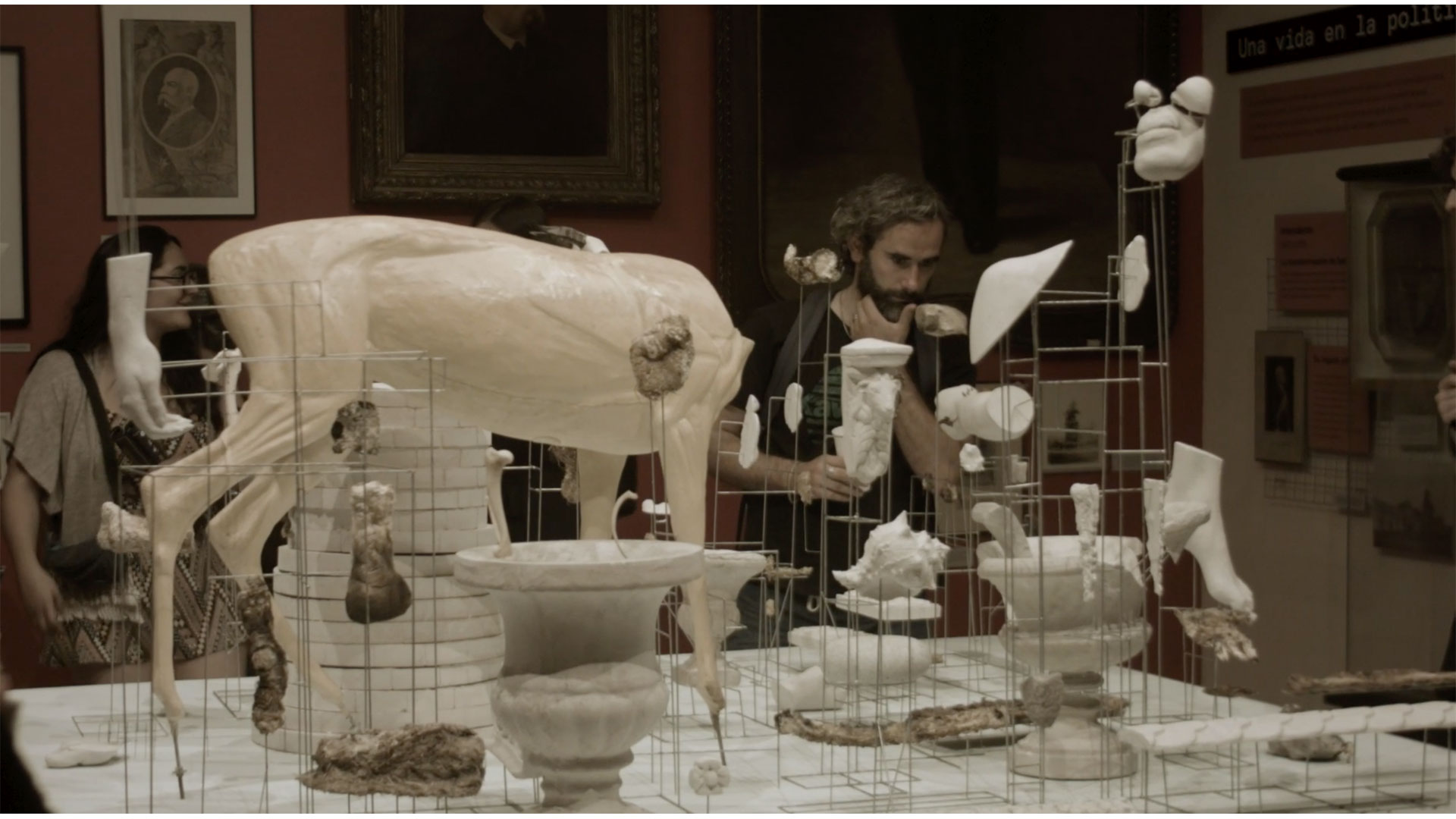Inocular
Rodrigo Arteaga
2019
A series of objects. Some fabricated with mycelium from the species Pleurotus ostreatus and Trametes versicolor, other made in cast, bones and diverse materials; are set on a big plynth in the middle of the hall that narrates Benjamín Vicuña Mackenna’s life. This man of letters and action that had an immense influence in the development of Chile’s arts and technologies, therefor these pieces follow up on his innovative spirit and reconduct it towards a world in crisis.
Rodrigo Artesaga’s sculptures are inspired on patrimonial elements. Some of them decorated the ancient Paseo del Cerro Santa Lucía, inaugurated in 1872, precisely by Vicuña Mackenna during his days as Santiago’s mayor. The origins of the shapes are the marble jars, cast iron fuigures of goddesses, warriors, angels, goat’s and dog’s heads; that for different reasons have disappeared. Copies of fragments of other decorative art pieces from tthe epoque are also integrated, taken from the Municipal Theatre and Palacio Pereira, also destroyed or missing. The instalation becomes an imaginary and intuitive arqueological site, in which objects reappear as organic fragments, just like fragments in our memory.
Inocular comes from latin “inoculare”, meaning graft. As the title for this instalation, the word refers back both to the biological process and the dynamics of cultural imposition. In this manner, Arteaga’s sculptures represent the contradictions and complexities of colonialism, domain and hybridization that mark the cultural histories of Europe and America. Decorative art in European style is a sample of this dynamics that were installed, morover a work model and industrialization oriented towards progress. Today we know that this history drove non-linear ways of existing towards destruction, unchaining a deep fissure in the original peoples and othe rural human communities, vegetables, animals and fungi that are today overflowing with violence.
The destruction or disappearances of these pieces and their current apparition as organic fragments, invites to reflect upon the eagerness of patrimonial permanence, over the ruin of grafted colonial codes, over the possibilities of thinking about culture in an organic manner and, in consequence, integrate it in the natural cycle.




